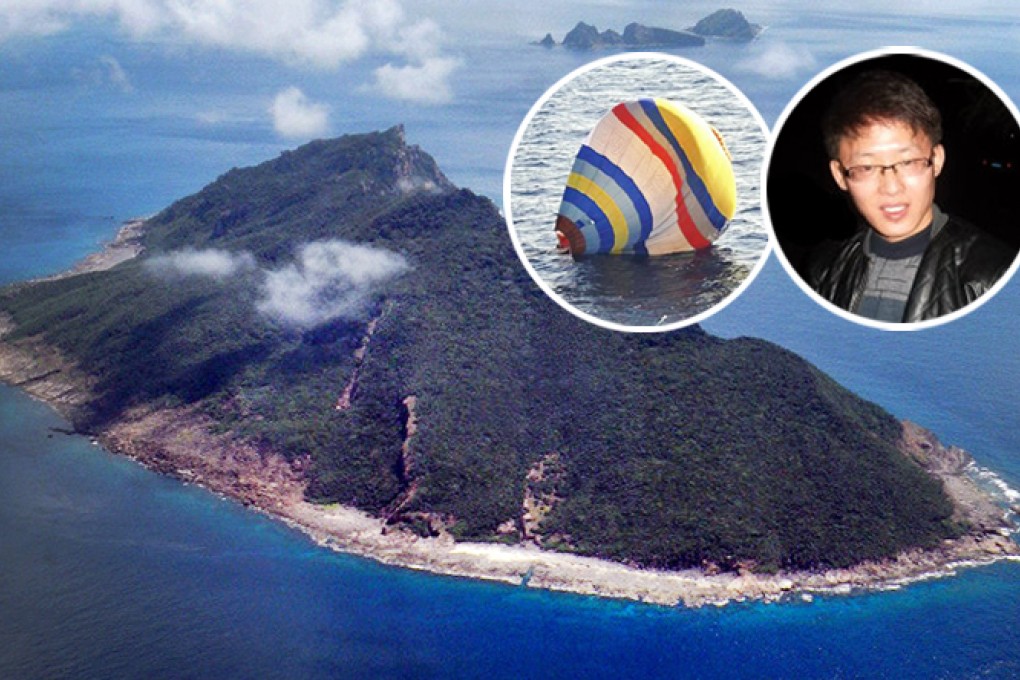Chinese balloonist rescued by Japan after failed flight to disputed islands
Japanese coastguard plucks protester from sea before handing him over to Chinese patrol ship

A man working as a cook in Hebei province has been rescued by the Japanese coastguard after he tried to fly to the disputed Diaoyu islands in a hot air balloon and crashed into the sea about 20 kilometres short of his destination.
The man, identified as 35-year-old Xu Shuaijun by the Japanese coastguard, said he wanted to land on the islands in the East China Sea that are at the centre of a bitter row between the two countries.
The Japanese coastguard dispatched a helicopter in search of Xu after receiving a missing-person report from the Taiwanese rescue authorities on Wednesday. It found the half-deflated balloon and Xu about half an hour later.
Xu had issued a radio distress signal before his balloon went down.
He was picked up in international waters 22 kilometres south of the Diaoyus.
The Japanese coastguard later handed the man over to a Chinese ship patrolling to the west of the islands.